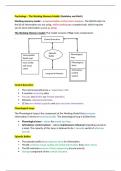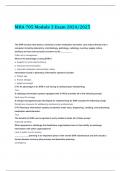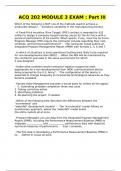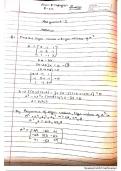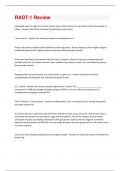Summary
Summary The Nervous System Notes
- Institution
- University Of The Witwatersrand (wits)
- Book
- Biology
This is a comprehensive summary and study material that includes lecture notes, textbook and other resource information pertaining to animal function, human and animal nervous system. It includes relevant and useful pictures and diagrams for a detailed understanding. All pages are loaded as A4. The...
[Show more]






